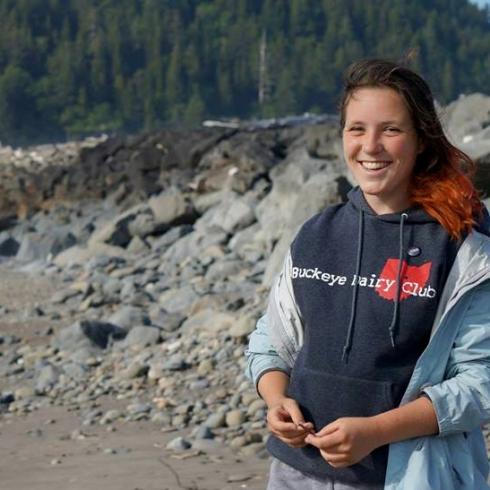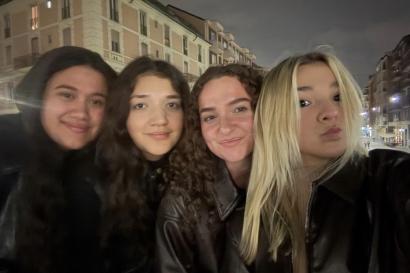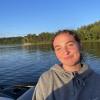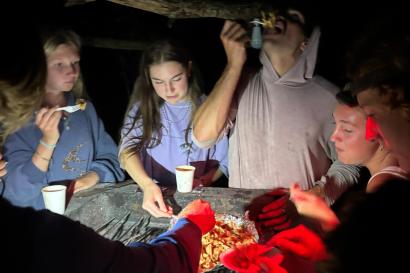On Tuesday, I rode the bus to school and took lecture notes at my desk. On Wednesday, I rode the bus to school and ended up here:

Maquipucuna Reserve.
We spent the night here at Maquipucuna Reserve, home to almost 400 species of birds, including over 30 species of hummingbirds. As we unloaded the bus, I warmed up my camera with a few quick photos of the bird feeder.




I could tell this was going to be a great Wednesday.


In the afternoon, we split into groups for a field exercise. My group was given the task of measuring tree density: not, as one friend thought, knocking on wood to see how dense it was. Rather, we were estimating the number of trees and the amount of understory coverage in small plots. We measured experimental plots as two-arm-length squares, resulting in a few treacherous forays off the path. The Americans suggested measuring 100 yards between plots, to which the Australians responded, “What the heck is a yard?” So we compromised by taking 200 footsteps between plots. Our results were inconclusive as far as relating tree density to altitude or slope, but we did notice that the forest closer to the lodge was younger — recently disturbed by sugarcane plantations, we later learned.



Check out the leaves below. From above, you barely notice the hot-pink tips on the leaves. But from below, the tips pop out twice as bright!


The little ugly nobs on top of the leaves are the flowers. This plant uses its leaf pattern to attract pollinators, and it must be targeting pollinators that fly below and look up. The name of the plant is “La Lengua de la Suegra,” or “Mother-in-Law’s Tongue,” because it looks like it’s dipped in blood. Apparently the evil mother-in-law is a global problem.



Look at these three unrelated saplings. All are green with reddish new growth from the top. What do you notice? On one, the leaves point straight up. On the other two, the leaves hang straight down. Since sunlight is the most valuable resource in the cloud forest, these leaves have adapted to remain vertical — minimizing shade to lower leaves — until they’ve developed the ability to photosynthesize. Straight up or straight down, doesn’t matter as long as you’re out of the way!
Now for the good stuff. Let’s start with bugs.


















Did you notice the incredibly camouflaged katydids, complete with brown spots and caterpillar bites taken out of their leaf wings? The transparent butterfly? The katydid with two heads? (It’s actually molting.) Look closely at the forest and you’ll be astounded by what you find! You’ll also want to watch your step, because these guys are hanging out on every leaf after dark. Meet the spiders.






Luckily, the spiders were all worth it because I got to see these guys: the snakes, frogs, and lizards. When I tried to focus on the frog, the camera kept picking up a spider in the background instead. Creepy!



And don’t forget the birds!


On our second day (yeah, that was day one) we took a hike through cattle pasture and cloud forest to a hidden waterfall. We stripped to bikinis and rubber boots and took the plunge into the icy river. A few brave souls even climbed the wet boulder to perch behind the waterfall. I hope these photos convey a sliver of the magical afternoon!







Nina Finley
<p><span style="color: rgb(29, 29, 29); font-family: Arial, Verdana, sans-serif; font-size: 12px; line-height: normal; background-color: rgb(237, 237, 237);">Nina Finley is a sophomore at The Ohio State University. She ventured to the Midwest from her hometown of Seattle, Washington to major in Animal Sciences and Evolution & Ecology. She would like to become a livestock vet or marine biologist. When she’s not studying, Nina loves to play ultimate frisbee, watch birds and raise meat rabbits. She’s passionate about agriculture, nature and Spanish, all of which she hopes to explore in Ecuador. Join the journey as Nina traces Darwin’s path and explores the natural wonders of the Galapagos Islands!</span></p>







